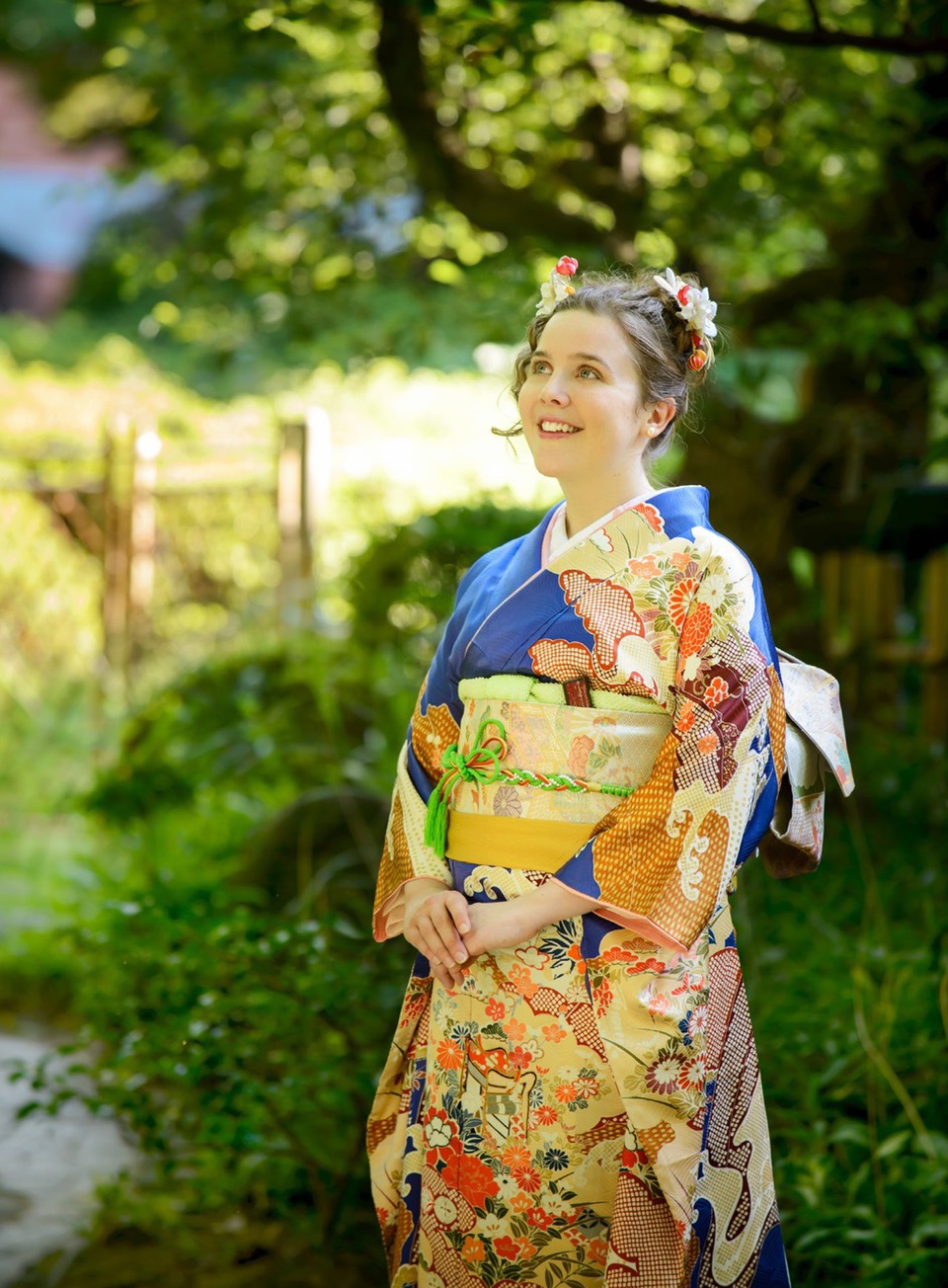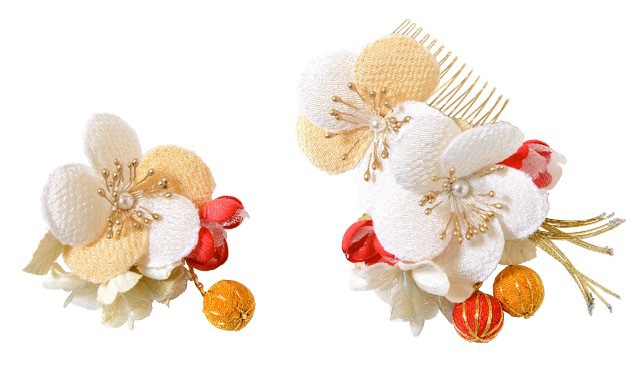Philippa Clark
Philippa Clark, a student at the Australian National University,
proudly wearing a kimono as a badge of international friendship.
Ms. Philippa Clark is a student of Asian studies and music at the Australian National University (ANU) in Canberra. She has loved Japan since she was a child.
“At my kindergarten,” Ms. Clark says, “we learned Japanese, and I had a lot of Japanese friends in middle school.” When she was 15 years old, Ms. Clark and her family went to Europe on vacation. On the way there, they stopped in Japan for three days. “We stayed in Kyoto,” she says, “and we saw three famous temples: Kinkaku-ji, Ginkaku-ji, and Kiyomizu-dera. I was amazed. It was also the first time that I bought Japanese clothing.” She bought a pink haori, a traditional Japanese jacket.
When she and her family returned home, Ms. Clark bought her first kimono. “I always thought kimonos were beautiful,” she says. Ms. Clark showed the kimono to her Japanese teacher, who taught her how to wear it. “For my high school graduation, I wore a kimono,” Ms. Clark says with a smile. Since then, she has loved wearing kimonos. She has also developed an interest in kitsuke, the proper way to wear a kimono.
On her next visit to Japan, Ms. Clark was an exchange student for a year at Kansai University in Osaka Prefecture. “I loved studying in Osaka; the people were so warm and friendly and they enjoy talking to foreigners,” she says. At the university, Ms. Clark joined many classes with Japanese and international students. She even joined the university’s a cappella club.
While in Osaka, she quickly searched for a school where she could learn how to wear a kimono. “One of my Japanese friends at the university had a kitsuke certificate,” Ms. Clark says, “and her grandmother had a kimono shop.” Through her friend’s introduction, Ms. Clark followed her dream and began a six-month course at a kitsuke school.
“Each week you had to learn a new skill because there are many kinds of kimonos,” she says. “For example, you learned how to wear and tie a yukata, a light cotton kimono used in the summer. After you mastered the yukata, you studied how to wear a kimono.” Four months later, she learned how to wear a tomesode, a black kimono that a mother wears to her daughter’s wedding. For this, Ms. Clark achieved the second-highest level of the kimono association.
Ms. Clark’s experience at the school also taught her about the people and culture of Japan. “To practice kitsuke you have to think very differently from Western culture, especially Australian culture,” she says. “In Japan they care about aesthetics and details, and they don’t hurry.” Ms. Clark has good memories about her teachers at the school. “They were wonderful,” she says. “They were very excited that I wanted to study kimono and wear it in Australia.”
During her stay in Japan, Ms. Clark visited Kyoto, Kanazawa, Nikko, Okinawa, and Tokyo. She made many friends. She enjoyed many parties and cooked local dishes. “It was probably the best year of my life,” she says, smiling at the memory. Talking about the future, Ms. Clark says, “My dream is to be the Australian ambassador to Japan someday.”
































































































































